His beaming smile lines highways and towers over bridges and mountains from the big cities to the most remote rural villages. Hugo Chávez is everywhere to be seen in Venezuela. So are the heroes that have inspired Chávez’s version of socialism in the 21st century, the most ubiquitous being Che Guevara and South America’s liberator, Simón Bolivar.
Traveling across Venezuela, it is hard not to be bombarded by state propaganda, which often appears a throwback to the Soviet era, while opposition propaganda is almost non-existent. It seems every inch of public space is being used to spell out the ideals of the Bolivarian revolution, personified by Chávez, the main protagonist, portrayed as firmly at the helm. In addition, blatant, and sometimes crude, anti-imperial messages of the kind seen in Cuba today are also found along roadsides in Venezuela. As Chávez pushes on with transforming Venezuela into a socialist state, government propaganda plays an important role in maintaining and mobilizing government supporters, the majority of whom are Venezuela’s poor. The messages are clear: power is with the people and they now have a stake in shaping the country’s future.
-0-
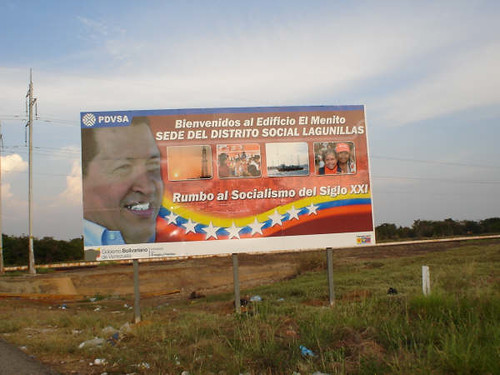
“Rumbo al Socialismo del siglo XXI” (Towards Socialism in the 21st century), says the billboard. Scores of similar billboards advertising government projects funded by the state-owned oil company (PDVSA), dot the landscape.
-0-
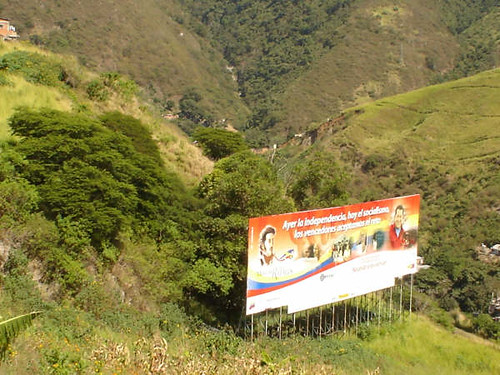
“Yesterday Independence, today socialism, the winners accept the challenge,” states the billboard.
-0-
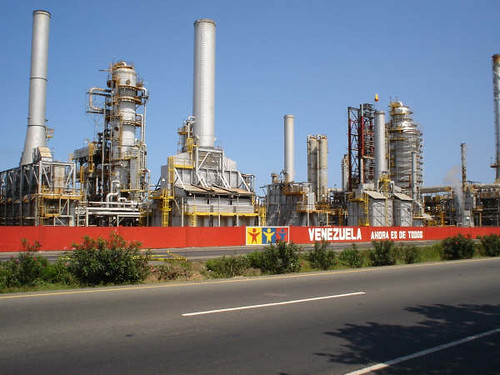
“Venezuela Ahora es de todos” (Venezuela now belongs to everyone), strategically placed near an oil refinery, is perhaps one of the most common slogans used by the government to emphasize that oil dollars are being distributed to the country’s poor. Using oil profits to implement social reform, including the construction of new schools, hospitals, roads and aqueducts, is the cornestone of the Bolivarian revolution. Many red jackets worn by civil servants also bear this popular slogan.
-0-
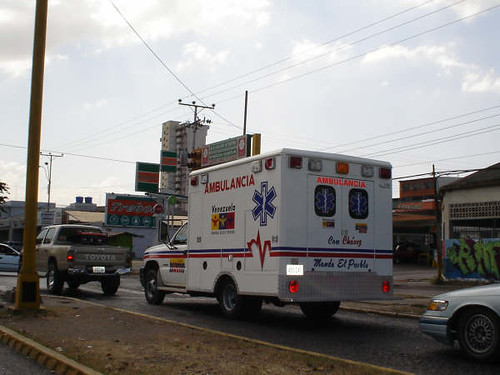
Even ambulances are used to spread state propaganda. Written on the back of this ambulance is “Con Chávez manda el pueblo” (People rule with Chávez).
-0-
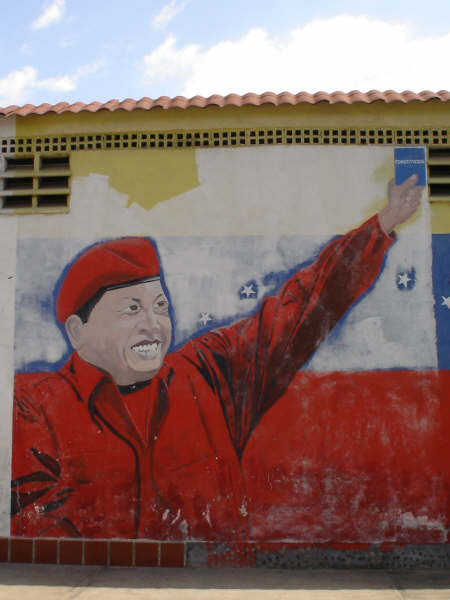
In his trademark red shirt and beret, this mural shows Chávez holding the Venezuelan constitution. Also sometimes referred to as the “blue book,” it is akin to Mao Tse-Tung’s famous little red book.
-0-
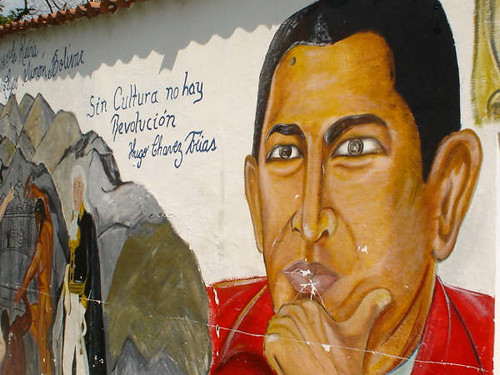
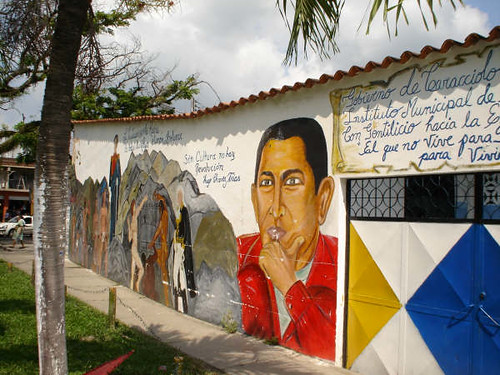
A freshly painted mural on the walls of a local college shows a pensive Chávez next to his words “Sin cultura no nay revoultion” (Without culture there’s no revolution). Often murals are used to relate the history of the Independence movement and the role of Bolivar.
-0-

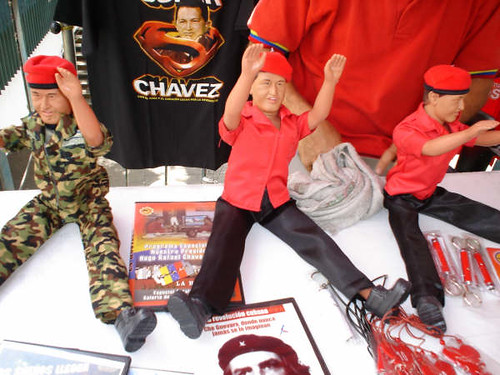
Tourists and locals buy Chavez memorabilia including dolls and “Chavez as superman” t-shirts in the Independence Square in downtown Caracas. They have become popular souvenirs for tourists and Chavistas alike.
-0-
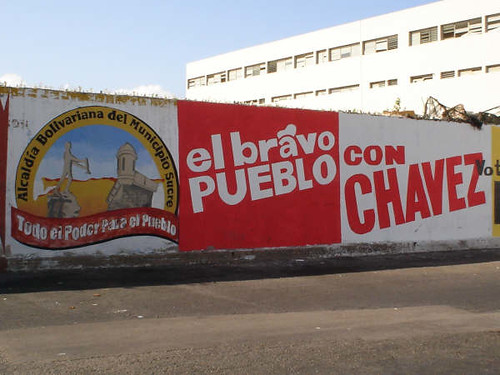
An election mural from the December 2006 presidential elections still remains. “Todo el poder para el pueblo” (All power to the people).
-0-
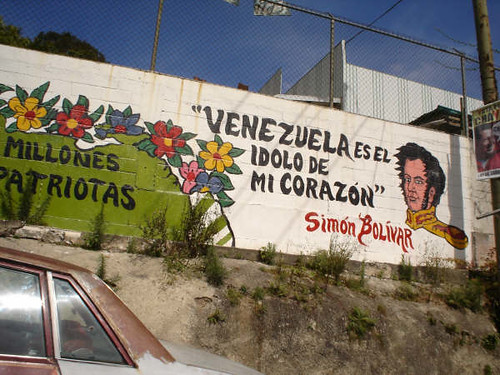
Reverance for Bolivar has reached cult-like status in Venezuela among Chavez supporters. The president incessantly quotes Bolivar in his public speeches. “Venezuela es el idolo de mi corazón” (Venezuela is the idol of my heart), the mural says. The country’s love affair with Bolivar continues.
-0-
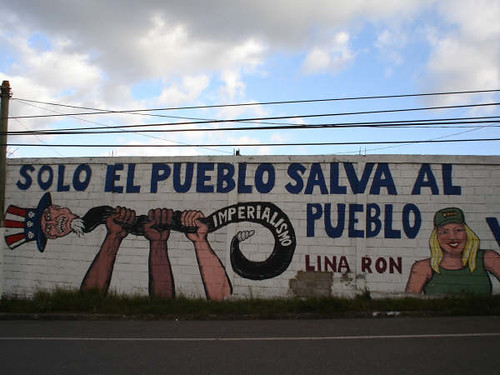
This mural speaks for itself. Uncle Sam is strangled under the message, “Only the people can save the people.” Lina Ron is an outspoken student activist and fervent Chavez supporter.
-0-
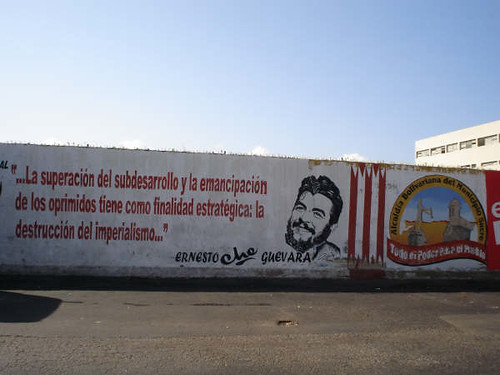
Che Guevara is often quoted in murals. It says: “Overpowering under-development and emancipating the oppressed has a final strategy: the destruction of imperialism.”
-0-
Anastasia Moloney is a British freelance journalist based in Bogotá.
Related













